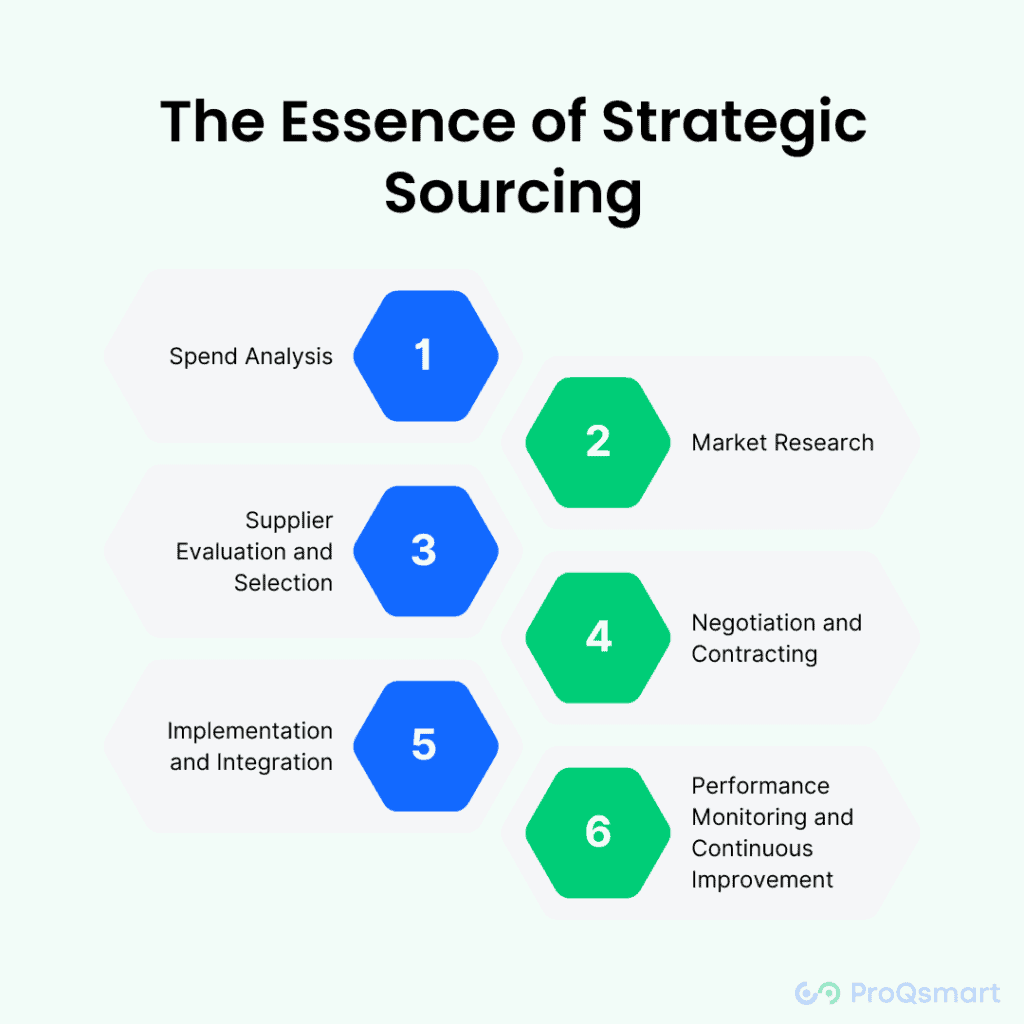Strategic sourcing is an approach that goes beyond mere cost-cutting, aiming to create lasting value within the procurement process. This method involves a thorough analysis of purchasing activities and supplier relationships to optimize costs and improve efficiency. By integrating sourcing, organizations can achieve a competitive advantage, ensuring sustainability and profitability.
The Essence of Strategic Sourcing

Strategic sourcing is a comprehensive process that includes several key phases:
1. Spend Analysis
This initial step involves gathering and analysing data on current spending to identify purchasing patterns and opportunities for cost reduction.
2. Market Research
Understanding the market dynamics, including supplier capabilities, pricing trends, and innovation opportunities, is crucial for informed decision-making.
3. Supplier Evaluation and Selection
This phase focuses on assessing potential suppliers based on criteria such as cost, quality, reliability, and service.
4. Negotiation and Contracting
Effective negotiation strategies are employed to secure favourable terms, followed by formalizing the agreements through contracts.
5. Implementation and Integration
After selecting suppliers, the focus shifts to integrating them into the procurement process and operational workflows.
6. Performance Monitoring and Continuous Improvement
Ongoing evaluation of supplier performance and continuous improvement initiatives are essential to ensure the long-term success of strategic sourcing efforts.
Best Practices in Strategic Sourcing
Cross-functional Collaboration: Engaging stakeholders from various departments ensures that sourcing strategies align with the organization’s overall objectives.
Data-driven Decision-Making: Utilizing analytics and sourcing technologies can provide insights into spending patterns, market trends, and supplier performance.
Supplier Relationship Management: Developing strong relationships with key suppliers can lead to better pricing, improved quality, and innovation.
Risk Management: Identifying and mitigating risks in the supply chain is crucial to maintain continuity and reduce vulnerabilities.
The Role of Technology in Strategic Sourcing
Technology plays a pivotal role in enhancing strategic sourcing processes. Tools like ProQsmart enable organizations to automate and streamline procurement tasks, conduct comprehensive spend management, and manage supplier relationships efficiently. These technologies facilitate better decision-making, leading to significant cost savings and operational improvements.
Achieving Cost Optimization through Strategic Sourcing
The ultimate goal of strategic sourcing is to optimize costs without compromising on quality or service. This is achieved through:
Leveraging Economies of Scale: Consolidating purchase orders to negotiate better terms and reduce prices.
Total Cost of Ownership (TCO): Considering all costs associated with the lifecycle of a product or service, not just the purchase price.
Value Engineering: Working with suppliers to find ways to reduce costs through product design and manufacturing improvements.
Conclusion
Strategic sourcing is more than just a procurement tactic; it’s a comprehensive approach that, when properly executed, can significantly reduce costs and enhance procurement efficiency. Through careful planning, collaboration, and the use of advanced sourcing technologies, organizations can optimize their procurement operations, contributing to overall business success. In today’s competitive landscape, adopting strategic sourcing practices is not just beneficial but essential for achieving cost-effective and efficient procurement.


